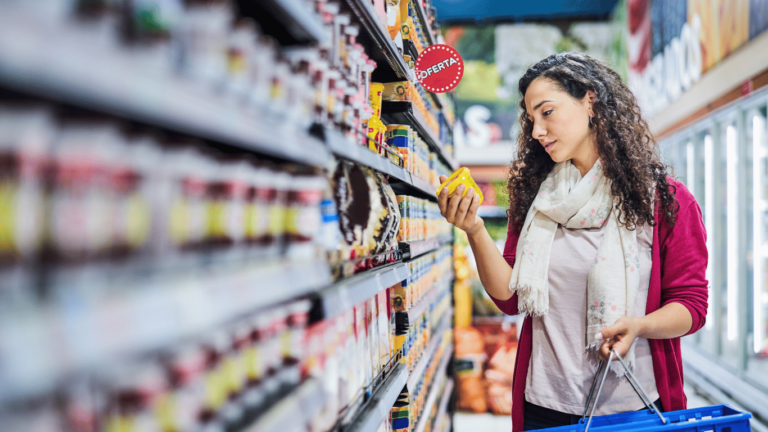Retail is no longer just about shelves, price tags, and checkout counters. It has transformed into a dynamic, sensory-driven experience that fuses physical presence with digital innovation. From neighborhood stores to global brands, the retail landscape is evolving rapidly, shaped by customer expectations, lifestyle shifts, and technological advancement. In today’s world, successful retail isn’t just about what you sell—it’s about how you sell it, how it feels, and how it connects with people’s lives.
Consumers are no longer passive buyers—they’re active participants. They expect personalized service, immersive environments, and seamless transitions between online and offline platforms. Whether it’s a curated pop-up store, an AI-powered recommendation engine, or a self-checkout kiosk in a boutique, the goal is the same: to make shopping intuitive, enjoyable, and memorable.
Expert Market Research Insight: The Changing Face of Mexico Retail
According to Expert Market Research, Mexico Retail is undergoing a powerful transformation driven by shifting consumer behavior, digitalization, and urban expansion. EMR highlights how a rising middle class, increased smartphone penetration, and youthful demographics are accelerating the demand for omnichannel experiences. Traditional retail formats are blending with e-commerce models, creating hybrid environments that prioritize convenience, personalization, and local flavor. From major cities like Mexico City and Guadalajara to growing suburban regions, retail in Mexico is being redefined by innovation and cultural adaptation. Expert Market Research continues to track these shifts, offering valuable insights into the strategies that are reshaping retail environments in both physical and digital spaces.
From Transaction to Transformation: The New Role of Retail
Retail has become more than a transaction—it’s now a transformative experience. Consumers expect to be inspired, educated, and entertained while they shop. This has given rise to experiential retail, where stores become storytelling spaces. Think of bookstores with cafés, fashion shops with interactive fitting rooms, or electronics stores offering hands-on demos. These environments don’t just sell products; they build relationships and create lasting impressions.
Physical retail spaces are also being redesigned for flexibility. Modular layouts, mobile checkout stations, and interactive digital displays offer retailers the agility to respond to trends and customer needs in real time. Meanwhile, backend systems are becoming smarter, using AI and predictive analytics to manage inventory, forecast demand, and optimize product placement.
Blending Digital and Physical: The Omnichannel Advantage
Today’s shoppers move fluidly between physical and digital realms. A customer might discover a product on social media, compare prices online, visit a store to try it out, and make the final purchase via an app. Retailers that integrate these touchpoints seamlessly are the ones winning customer loyalty.
Click-and-collect services, virtual try-ons, and personalized digital storefronts are just a few tools helping retailers bridge the gap. Retail isn’t about choosing online or offline—it’s about creating a unified journey. Those who can offer consistency, speed, and convenience across platforms will remain relevant in an increasingly competitive space.
The Emotional Element: Why People Still Love to Shop in Person
Despite the rise of e-commerce, the human need for connection, touch, and real-time interaction still draws people into stores. Retail therapy isn’t just a catchphrase—it reflects a deeper truth about how shopping can elevate mood, build confidence, and offer a social experience.
Brick-and-mortar locations provide opportunities for community building, brand immersion, and instant gratification. Store environments that evoke warmth, creativity, and authenticity can turn casual browsers into loyal fans. This emotional layer is something digital retail still struggles to fully replicate, which is why physical stores continue to hold their ground as important brand touchpoints.
Personalization and Purpose: The Future of Customer Experience
Retailers today are going beyond demographics—they’re tapping into personal values, lifestyle goals, and emotional triggers. A customer doesn’t just want a new pair of shoes; they want to know the story behind them, the sustainability of the materials, and how the product fits into their identity.
Data plays a critical role here. With the help of analytics and customer profiling, brands can tailor offers, content, and experiences that resonate on an individual level. Subscription models, loyalty programs, and custom product designs are making shopping more personal than ever before. In this era, relevance is currency—and personalization is the key to unlocking it.
Local Roots, Global Vision: Why Regional Flavor Still Matters
As retail becomes more global, there’s an even stronger desire for local identity. Consumers appreciate brands that understand their culture, language, and values. This is where regional insights become crucial. Retailers that adapt their offerings and experiences to local preferences often build deeper trust and brand love.
In markets like Mexico, for example, understanding regional shopping habits, holidays, and preferences enables brands to localize without losing consistency. It’s not about one-size-fits-all anymore—it’s about meaningful customization that reflects the community while maintaining global standards.
Retail That Resonates, Inspires, and Evolves
Retail has moved from the realm of convenience to a space of meaning. It’s about creating experiences that reflect who we are, what we value, and how we live. As technology continues to advance, and as shoppers become more informed and expressive, retail will keep evolving—becoming more human, more intuitive, and more responsive.
The most successful retailers will be those who listen closely, innovate wisely, and deliver experiences that not only satisfy but surprise. Whether through a screen or across a store counter, the essence of retail will always be the same: connection. And in that connection lies the magic of modern shopping.



